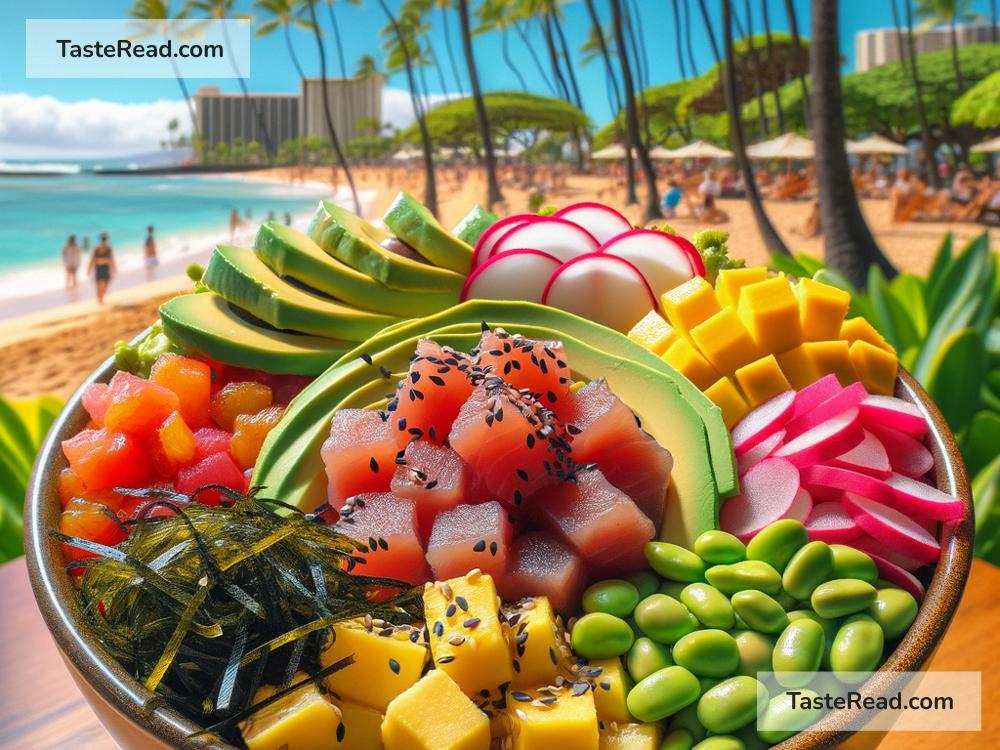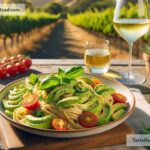Journeying Through Contemporary Poke Bowl Artistry in Honolulu, USA
Honolulu, the beautiful capital of Hawaii, is a paradise for food lovers. Among its vibrant food scene, one dish stands out as the heart and soul of Hawaiian cuisine—poke bowls. Poke (pronounced poh-kay) combines fresh, raw fish with tasty seasonings, served either as a standalone dish or atop layers of rice, greens, or other creative bases. For locals, poke has always been a part of their island culture and daily life. But what’s exciting today is how poke bowls have transformed into an art form, blending Hawaii’s traditions with contemporary, global flavors.
If you’re visiting Honolulu, experiencing these creative poke bowls is almost like taking a food adventure through the chefs’ imaginations and the island’s history. Let’s dive into the artistry behind poke bowls and how they reflect both old and new Hawaii.
What Makes Poke Bowls Special?
Poke bowls are all about simplicity, freshness, and balance. Traditionally, poke was made with freshly-caught fish like ahi (tuna), soy sauce, sea salt, onions, and limu (seaweed). Fish was diced into small cubes, marinated, and enjoyed as a quick snack or meal.
Over time, as people experimented and blended cuisines from around the world, poke bowls became more colorful and customizable. In today’s Honolulu poke bowl scene, you’ll find everything from traditional recipes that honor Hawaii’s roots to bowls with bold Asian, Latin American, and even mainland USA influences. You choose your base (white rice, brown rice, zucchini noodles, or salad greens), add your fish, pick toppings like avocado, furikake, mango, or crunchy nuts, and drizzle on flavorful sauces like spicy mayo, ponzu, or sesame dressing.
Each poke bowl is a masterpiece—a harmony of textures, flavors, and colors that reflect the creativity of Honolulu’s chefs and the bounty of fresh ingredients available on the islands.
A Taste of Tradition
If you’re looking for a more traditional poke experience, Honolulu has plenty of places where chefs respect the roots of this dish. Shops like Tamura’s Fine Wine & Liquors have earned loyal fans by offering fresh, authentic Hawaiian poke that stays true to the classic flavors. Many locals still favor simple ahi poke or spicy tuna poke, paired with rice or eaten directly from a bowl with chopsticks.
These classic poke bowls showcase how quality ingredients and minimalist preparation shine. They remind us of Hawaii’s connection to the ocean and the importance of preserving traditional food culture while embracing the future.
Blending Global Flavors
Poke’s journey into contemporary artistry is truly exciting. In today’s Honolulu, you’ll find poke bowls with a fusion twist that reflect Hawaii’s diverse population and connections to Asian, Pacific Islander, and mainland cuisines. For example, at restaurants like Poke Bar or Fresh Catch, you might find poke bowls with Korean kimchi, Japanese pickled ginger, Mexican salsa verde, or even tropical Hawaiian fruits like pineapple.
One exciting trend is the addition of vegetarian and vegan-friendly poke options. For diners who don’t eat fish, chefs swap out traditional ahi and salmon for creative alternatives using tofu, tempeh, or marinated beets. Toppings like coconut flakes, crispy taro chips, and colorful veggies make these bowls just as vibrant and delicious as the originals.
Some chefs even use poke bowls as an artistic canvas to explore bold, unexpected combinations. A drizzle of truffle oil? A sprinkle of edible flowers? The possibilities for poke bowls are endless in Honolulu’s food scene. These contemporary creations attract adventurous eaters who view food as more than sustenance—it’s a form of art and expression.
The Importance of Fresh Ingredients
What makes poke bowls in Honolulu truly special are the island’s fresh ingredients. Hawaii is surrounded by an abundant ocean, providing top-quality fish like ahi tuna and salmon. Local farmers grow fresh produce under the sun, including avocados, cucumbers, scallions, and citrus fruits. Even rice, an important base for poke bowls, is chosen carefully to complement the flavors of the toppings.
Ingredients matter to Honolulu chefs, and their use of fresh, sustainable, and high-quality components is what elevates every poke bowl to perfection. Whether traditional or contemporary, each bite tells the story of the island’s natural bounty and dedication to excellent food.
The Poke Bowl Experience in Honolulu
Eating a poke bowl in Honolulu is more than a meal—it’s an experience. You’ll find small mom-and-pop shops tucked into markets where locals gather. You’ll also find trendy restaurants crafting gourmet poke bowls that look like art. Wherever you go, you’ll feel the aloha spirit—a sense of warmth, welcoming, and love for the food, the culture, and the people.
A poke bowl can be as quick as a grab-and-go snack or as intricate as a three-layered dish served to perfection. Some poke spots even let you build your bowl step-by-step, choosing your base, protein, toppings, and sauces to create something unique to your tastes.
Conclusion
Journeying through Honolulu’s poke bowl artistry is like exploring both history and creativity. From the classic poke that honors Hawaii’s traditions to the contemporary fusion bowls that surprise and delight, every dish reflects the culture, community, and fresh flavors of the islands. Whether you’re a visitor discovering poke for the first time or a local enjoying your favorite comfort food, Honolulu’s poke bowl offerings will leave your taste buds happy and your heart full of aloha.
So, next time you find yourself on the island, grab a poke bowl and savor not just the food, but the story behind it. In every bite, you’ll experience the perfect blend of simplicity, innovation, and love for Hawaii’s culinary heritage.


